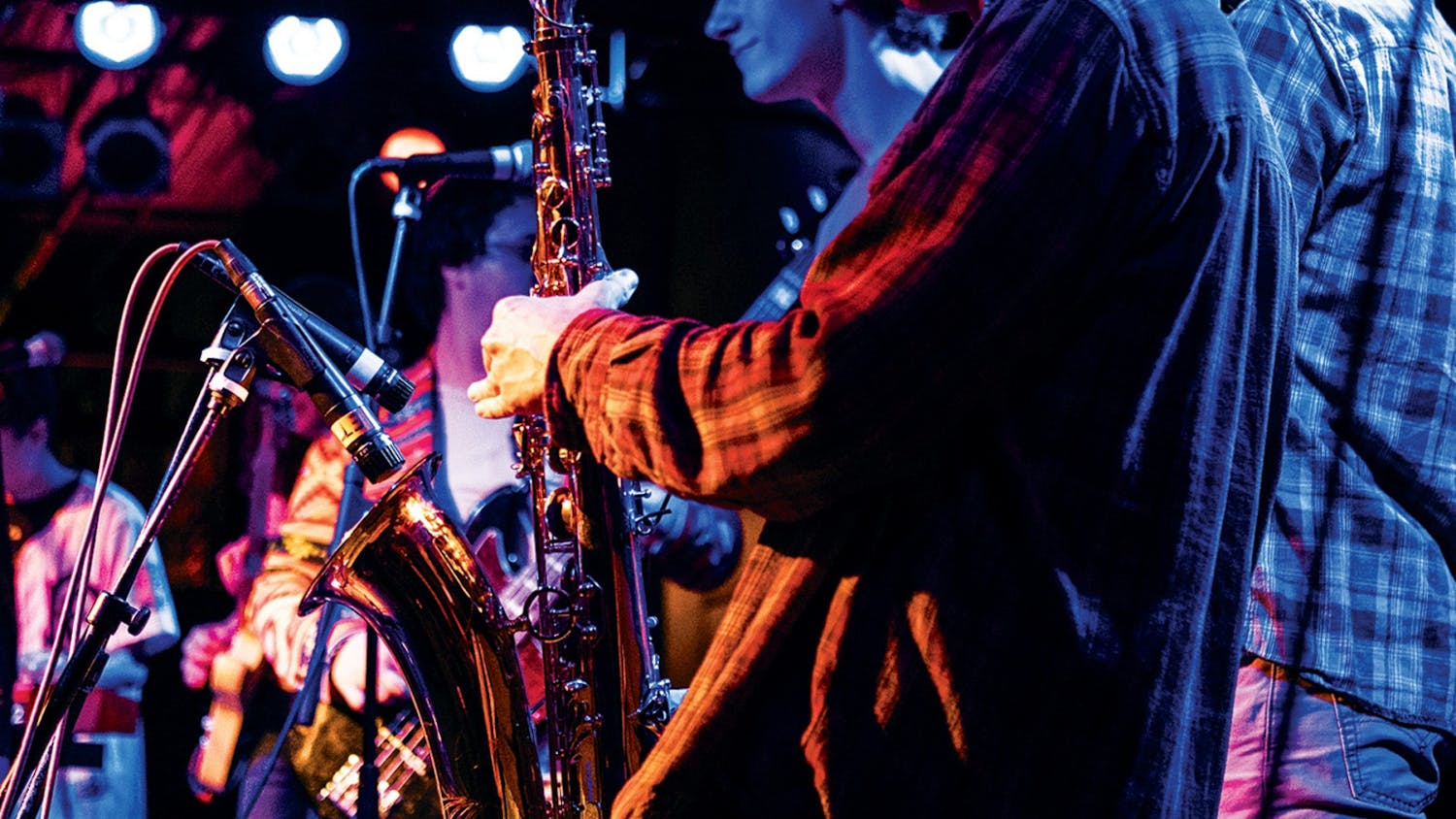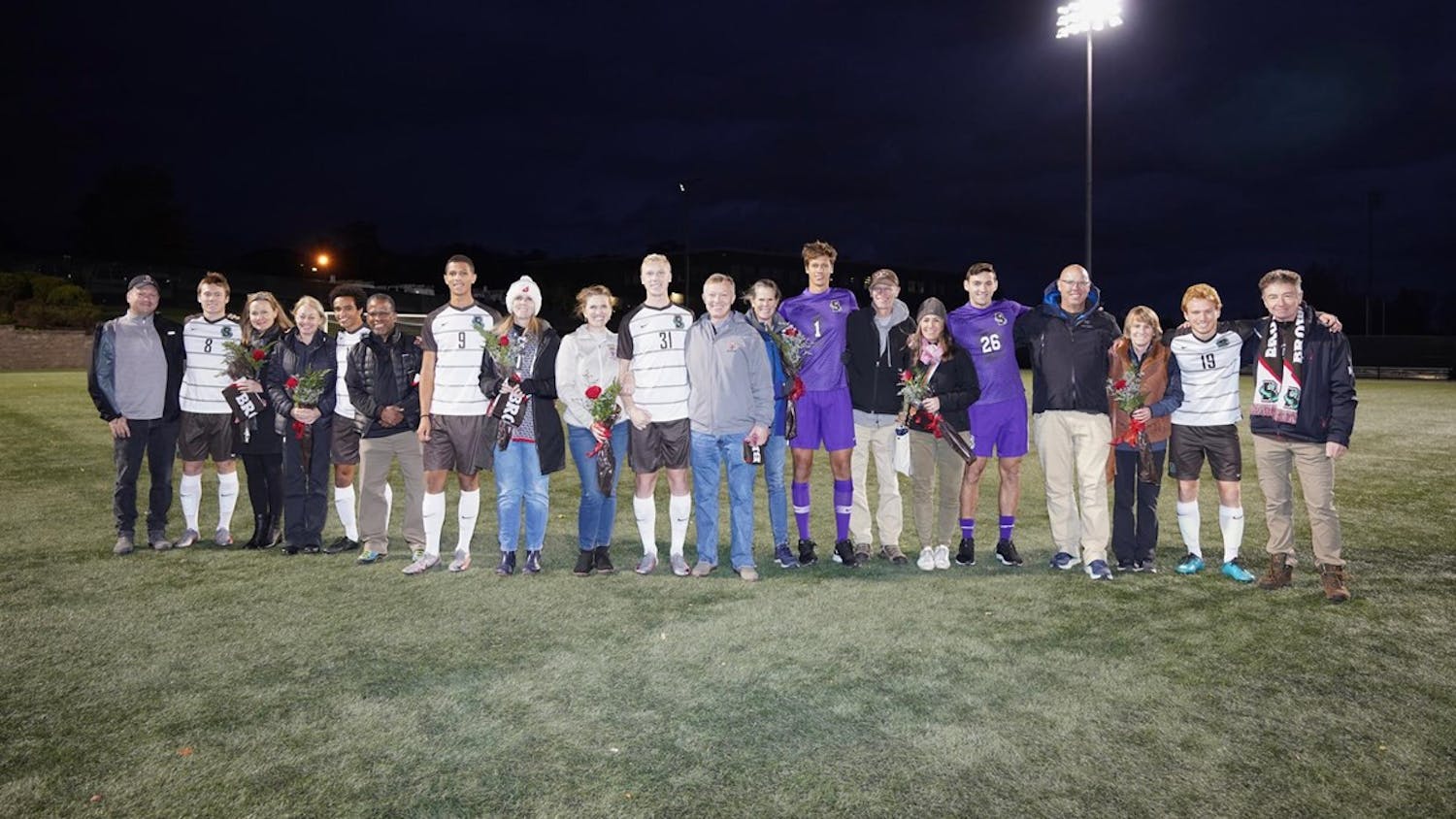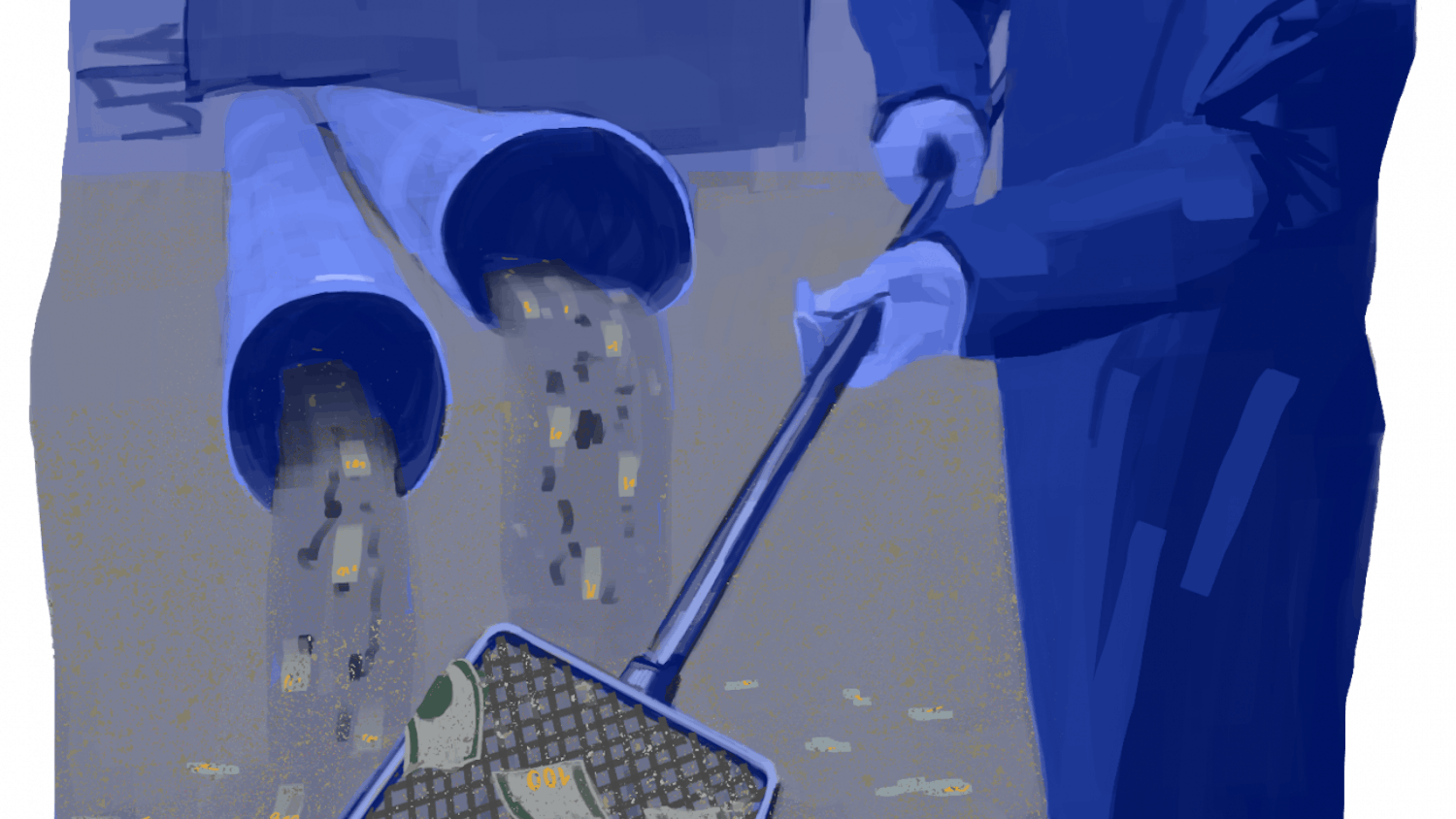With his bushy white hair, active Twitter feed and hipster glasses, Steven Lubar, professor of American studies, is not your typical museum director. He presides over a collection of artifacts including jade coins and primitive spearheads, all lovingly labeled and nestled away in a corner of the Main Green.
The Haffenreffer Museum of Anthropology, which describes itself as a "teaching museum" on its website, is located in a 2,000-square-foot space on the first floor of Manning Hall, barely 50 yards away from the Stephen Robert '62 Campus Center and University Hall. But despite its central location, the building is more likely to draw prospective applicants looking for the upstairs information sessions than visitors interested in its collections.
"A lot of students have never been here which is too bad," Lubar said. "Museums have to be lively to attract attention, and just having wonderful stuff is sometimes not enough."
But Lubar hopes all of that is about to change. The Haffenreffer Museum, currently in the process of an extended renovation, is reinventing both its appearance and the experience it offers visitors to attract more students. With a student group recently approved by the Undergraduate Council of Students and increasing collaboration with University classes and programs, the museum is launching new programs to gain recognition on campus.
A makeover at Manning
The Haffenreffer Museum, which according to Lubar now possesses approximately 1 million artifacts, originally began as the private collection of Rudolf Haffenreffer, a Rhode Island philanthropist who founded the King Philip Museum in Bristol in the early 1900s. In 1955, the museum, along with 220 acres of land, was donated to the University and named after the late industrialist. The Haffenreffer Museum operated remotely in Bristol until 2006, when the University set up the display space in Manning Hall. Today, the museum occupies both buildings, and the location in Bristol serves as the Collections Research Center.
The first floor of Manning Hall has since received a makeover. With a brand new sign on the previously unmarked door and the interior walls of the museum redone in primary colors, the display space seems as bright and cheerful as an IKEA storeroom. But instead of Swedish furniture, the walls and stands are lined with artifacts.
Lubar springs to life as he talks about the new exhibits — his voice speeds up and he eagerly elaborates on the artifacts. The museum currently features three exhibits — artifacts from aboriginal Taiwan and early Rhode Island and Chinese paintings.
"Up until two years ago, the museum did one exhibit in the whole space every other year," Lubar said. Now, in addition to three exhibit galleries, the museum has also added a CultureLab to simulate its Bristol facility, he said.
A small, well-lit corner, the CultureLab features some of the museum's artifacts that are not on display with information on their histories and significance.
Inter-disciplines
The Haffenreffer Museum is also establishing new connections to draw visitors, from partnering with classes on campus to initiating other joint ventures with the University. Two of the museum's current exhibits are the results of a collaboration between the museum and the University's ongoing Year of China initiative.
"The planning has been in the works for a while," said Year of China coordinator Shana Weinberg. In addition to the Manning displays, the Haffenreffer Museum and Year of China have collaborated on sister exhibits such as one of Daoist robes at the Rhode Island School of Design and a satellite exhibit featuring a Chinese imperial robe in Faunce.
The Haffenreffer Museum is also seeking a return to its "teaching museum" roots by involving classes and other students in its exhibits. Lubar said an ethnic studies class will be curating an exhibit in April, and a class on the archaeology of money recently explored the museum's collections.
"We've got a couple of classes that are bringing students by to actually handle objects and learn from objects," he said. "It should be used like a library."
The Haffenreffer Museum has also reached out to students outside the social sciences — the newly-installed Chinese paintings have integrated technology. A group of students working with Andries van Dam, professor of computer science, has created a touch screen system, Lubar said. "If you want to know more about any object, you can touch it and it tells us who it is, what the various symbolism is," he said, referring to the portraits.
The display is crisp and clean and shows off the 17th-century paintings in bright high-quality resolution. Lubar said the project offered computer science students the opportunity to apply their skills to the real world.
Collaborating with these students also offers the museum the opportunity to update its exhibits and bring in more attention, he said.
New and old friends
The Haffenreffer Museum has traditionally made use of an unofficial student advisory board to attract interest. Last semester, this board successfully applied for UCS recognition and is now a Category I student organization. Members of the Haffenreffer Museum Student Group are trying to "bring the museum to the students and bring the students to the museum," said co-president Hannah Sisk '13.
The group organizes visits to the gallery on campus and trips to the Bristol site so that students can "see what it takes to run a large scale museum," she said.
It has also expanded to include three committees managing on-campus outreach, general programming and exhibit curating.
Sisk, who became involved with the group out of her "love for the ancient and the old," said not many students take advantage of the museum. "It's kind of a really odd situation that we have hundreds of thousands of objects and artifacts in collection over there but only a small gallery to show them here," she said.
"You'd be surprised how many people stumble in and s
ay, ‘I had no idea this was here, this is cool,'" Sisk said.
Lubar said he does not want to look too far into the future but plans to increase student outreach.
"What we're eager to do is to move all of our collections close to campus so that students can get access to them more easily," he said. Then "we will be able to really open it up and say, ‘Come and play with this stuff.'"




